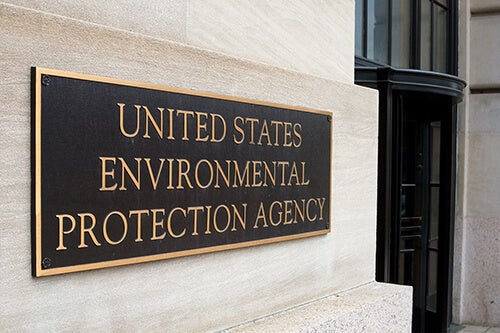Assent’s Experts Look Back
Last year, we asked our team of regulatory experts to provide predictions for 2022. Today, we’re asking them to reflect on their predictions and compare them with the current enforcement landscape. Back then, the experts broke it down into product compliance, trade compliance, and ESG… in 2023 the boundaries are not as clear. Now market access is locked behind more complex requirements that combine product safety, ESG, and trade compliance into one larger goal: Sustainability.
PFAS Are Going to Be the Big Target in Product Compliance.
Neil Smith, Manager, Compliance & Regulatory
Our 2022 Prediction:
I expect that perfluoroalkyl and polyfluoroalkyl substances (PFAS) are going to be one of the main focus areas for 2022. We are seeing regulators across the major economic areas cracking down on PFAS in products and articles, from reporting obligations up to adding PFAS compounds to banned lists. This is a trend that will continue, with more PFAS families added, covering thousands of CAS numbers for restriction or bans.
PFAS are on the firing line of the European Commission’s Chemical Strategy for Sustainability (CSS), with the stated action to “phas[e] out the use of PFAS in the EU, unless their use is essential.” Manufacturers should be on the lookout for how the European Commission defines “essential use,” as this will be pivotal in understanding which products can be sold on the market.
In addition, the EPA is signalling that the Toxic Substances Control Act (TSCA) will be moving to regulate articles in products, and this will require manufacturers to be able to demonstrate what’s in their supply chains and the articles in their products.
Neil’s comments today:
Honestly, this prediction could not have been more correct. The European Chemicals Agency (ECHA) released the proposed Annex 17 ban on all PFAS in February 2023, and the six-month public comment period just got underway. The U.S. proposed a PFAS reporting rule that included articles and no de minimis threshold — it had been communicated that the final rule would be released by the end of March 2023, but there are rumblings that it will be delayed.
Currently, there are 46 states with PFAS reporting or restriction legislations proposed or on the books: Maine passed a PFAS reporting rule and a phased-in PFAS ban that would cover all uses by 2030, and model legislations are being passed in multiple states. My favorite legislation though is the REACH Annex 17 ban on PFAS in firefighting foam that will come into force in advance of the other PFAS. In effect, ECHA is saying “if you were on fire, I wouldn’t even use PFAS to put you out.”
What I didn’t see coming was how quickly some chemical manufacturers and major companies would act to get ahead of these regulations by discontinuing PFAS production or use altogether. The 500-pound gorilla, so to speak, was the announcement by 3M that they would stop all PFAS production by 2025. This created a near-term obsolescence risk for companies well in advance of any that would have been derived by the new regulations.
The underlying issue remains the same: Most companies have an incomplete picture of which PFAS substances are present in the parts they purchase or the products they sell.
Key Takeaway: The first step to addressing the regulatory, obsolescence, customer, and various forms of liability risk is mapping PFAS use in your supply chain and operations. If you’re not already aware of where PFAS is in your supply chain, you’re already behind. Watch Assent’s on-demand webinar, 2023 PFAS Regulatory Update, to learn how to get ready for the new 2023 requirements.
Learn how to track materials in your supply chain to comply with TSCA Section 6 restrictions. Read Assent’s The TSCA Section 6 Handbook: Your Guide to Compliance.
Forced Labor Restrictions Will Be the Biggest Disrupter.
Ben Gross, Trade Compliance, Legal Counsel & Abiola Okpechi, Responsible Sourcing Expert
Our 2022 Prediction:
The pandemic will no longer be the biggest disrupter in manufacturing supply chains. New and expanded enforcement on forced labor restrictions, namely the Uyghur Forced Labor Prevention Act (UFLPA) and proposed forced labor sanctions coming out of the EU, will have a significant impact on your ability to purchase parts and access markets in a timely manner.
Regulators for trade compliance will expect organizations to know the country of origin for each and every part, as deep into the supply chain as possible. This piece of data will be more important than ever, with international markets harmonizing their trade compliance enforcement using country of origin and Harmonized Item Description and Coding System (HS) codes.
Assent’s comments today:
Abiola Okpechi is Assent’s go-to expert on forced labor in supply chains and human rights. We asked her to weigh in on this prediction because UFLPA is now one of the biggest market disruptors for global manufacturers serving the U.S. market.
As predicted, the UFLPA was indeed the biggest disrupter in manufacturing supply chains, going so far as to cause the cancellation of capital projects. Nearly $1 billion dollars worth of goods have been stopped since the UFLPA went into force. We do not see this slowing down any time soon.
If anything, we expect enforcement to grow as U.S. Customs and Border Protection (CBP) leverages its recently increased budget and access to tools to help it detect shipments linked to the Xinjiang Uygur Autonomous Region (XUAR). Today no industry is immune from UFLPA enforcement, evidenced by the CBP adding even more products to watch lists. Any good with hidden risks of forced labor will be under scrutiny.
We expect more products to be added as more research on supply chain links to the XUAR emerges. Similarly, more countries will come into focus as the CBP clamps down on efforts to avoid goods detention through transshipment.
Key Takeaway: Due diligence for the UFLPA is not just about goods coming from China. Manufacturers need to have visibility into the country of origin for all their materials and not just focus on a few high-risk countries. Assent has an on-demand webinar on this topic. Watch 2023 UFLPA Update: Enforcement Is on the Rise — Can You Risk Product Seizures to get more expert insights on UFLPA enforcement.
The Further Merging of Product Compliance and ESG Components.
Jared Connors, Director, Sustainability
Our 2022 Prediction:
In 2022, we’re going to see the further merging of product compliance requirements and ESG components in regulations. Regulators and investors now understand that product compliance is another form of corporate social responsibility (CSR).
Manufacturers are already seeing this in the new regulations coming out of the EU. Newer due diligence regulations, like the German Supply Chain Act, which focuses on human rights violations in the supply chain, require you to know what’s in your product and how it’s made — tying your product and supply chain to your impact on human lives around the globe. These regulations are building off of each other, using the momentum to introduce increasingly stringent data requirements.
Even regulatory requirements without an explicit human rights element, like Substances of Concern In articles, as such or in complex objects (Products) (SCIP) database obligations, are designed to protect human health and reduce environmental exposure. In this way, they fall under the umbrella of CSR.
In the past, ESG requirements and product compliance regulations have been viewed as separate drivers, and manufacturers have treated them as siloed business processes. However, the new regulations being rolled out are breaking down that binary distinction.
Jared’s comments today:
What strikes me most isn’t so much the merger of product compliance and ESG, but just how prolific these regulations truly are. With mandatory climate disclosures and the Corporate Sustainability Reporting Directive
(CSRD) emerging in the EU, companies can’t look at ESG as a “nice-to-have” anymore. Even President Biden’s first-ever veto in his presidency was related to ESG performance. This way of thinking is here, and it’s only going to get bigger. Regulators and governments are positioning it as being just as important to them as financial performance.
Another huge example is the new PFAS restrictions. It’s a real-world case of sustainability, environmental health, and product compliance as a single, combined focus. Organizations are being held accountable for the impacts of their products on people and the planet. That means companies need to have complete transparency into not only the environmental impacts of the manufacturing process and procurement of goods but the substances within those products.
Key Takeaway: If you aren’t well-versed in ESG already, now is the time to get familiar with what’s material to your operations and a priority for your investors. A materiality assessment, based on a knowledge of how investors are using ESG scoring, is key. Many manufacturers think that sustainability starts within the four walls of their operations, but the largest ESG risks are hidden in their supply chains, meaning that internal and external ESG initiatives should be run in parallel.
The Time to Act Is Now
More than a year has passed since our experts shared these predictions, and manufacturers are now feeling the impact of all of them coming true. If you’re taking a proactive approach to supply chain sustainability management, you’re protecting yourself against the disruptions that arise whenever new requirements come onto the market. Don’t let another year pass you by without taking action.
Take Assent’s online maturity assessment to learn the next steps you can take to improve supply chain resilience.
Assent’s Experts Look Back
Last year, we asked our team of regulatory experts to provide predictions for 2022. Today, we’re asking them to reflect on their predictions and compare them with the current enforcement landscape. Back then, the experts broke it down into product compliance, trade compliance, and ESG… in 2023 the boundaries are not as clear. Now market access is locked behind more complex requirements that combine product safety, ESG, and trade compliance into one larger goal: Sustainability.
PFAS Are Going to Be the Big Target in Product Compliance.
Neil Smith, Manager, Compliance & Regulatory
Our 2022 Prediction:
I expect that perfluoroalkyl and polyfluoroalkyl substances (PFAS) are going to be one of the main focus areas for 2022. We are seeing regulators across the major economic areas cracking down on PFAS in products and articles, from reporting obligations up to adding PFAS compounds to banned lists. This is a trend that will continue, with more PFAS families added, covering thousands of CAS numbers for restriction or bans.
PFAS are on the firing line of the European Commission’s Chemical Strategy for Sustainability (CSS), with the stated action to “phas[e] out the use of PFAS in the EU, unless their use is essential.” Manufacturers should be on the lookout for how the European Commission defines “essential use,” as this will be pivotal in understanding which products can be sold on the market.
In addition, the EPA is signalling that the Toxic Substances Control Act (TSCA) will be moving to regulate articles in products, and this will require manufacturers to be able to demonstrate what’s in their supply chains and the articles in their products.
Neil’s comments today:
Honestly, this prediction could not have been more correct. The European Chemicals Agency (ECHA) released the proposed Annex 17 ban on all PFAS in February 2023, and the six-month public comment period just got underway. The U.S. proposed a PFAS reporting rule that included articles and no de minimis threshold — it had been communicated that the final rule would be released by the end of March 2023, but there are rumblings that it will be delayed.
Currently, there are 46 states with PFAS reporting or restriction legislations proposed or on the books: Maine passed a PFAS reporting rule and a phased-in PFAS ban that would cover all uses by 2030, and model legislations are being passed in multiple states. My favorite legislation though is the REACH Annex 17 ban on PFAS in firefighting foam that will come into force in advance of the other PFAS. In effect, ECHA is saying “if you were on fire, I wouldn’t even use PFAS to put you out.”
What I didn’t see coming was how quickly some chemical manufacturers and major companies would act to get ahead of these regulations by discontinuing PFAS production or use altogether. The 500-pound gorilla, so to speak, was the announcement by 3M that they would stop all PFAS production by 2025. This created a near-term obsolescence risk for companies well in advance of any that would have been derived by the new regulations.
The underlying issue remains the same: Most companies have an incomplete picture of which PFAS substances are present in the parts they purchase or the products they sell.
Key Takeaway: The first step to addressing the regulatory, obsolescence, customer, and various forms of liability risk is mapping PFAS use in your supply chain and operations. If you’re not already aware of where PFAS is in your supply chain, you’re already behind. Watch Assent’s on-demand webinar, 2023 PFAS Regulatory Update, to learn how to get ready for the new 2023 requirements.
Learn how to track materials in your supply chain to comply with TSCA Section 6 restrictions. Read Assent’s The TSCA Section 6 Handbook: Your Guide to Compliance.
Forced Labor Restrictions Will Be the Biggest Disrupter.
Ben Gross, Trade Compliance, Legal Counsel & Abiola Okpechi, Responsible Sourcing Expert
Our 2022 Prediction:
The pandemic will no longer be the biggest disrupter in manufacturing supply chains. New and expanded enforcement on forced labor restrictions, namely the Uyghur Forced Labor Prevention Act (UFLPA) and proposed forced labor sanctions coming out of the EU, will have a significant impact on your ability to purchase parts and access markets in a timely manner.
Regulators for trade compliance will expect organizations to know the country of origin for each and every part, as deep into the supply chain as possible. This piece of data will be more important than ever, with international markets harmonizing their trade compliance enforcement using country of origin and Harmonized Item Description and Coding System (HS) codes.
Assent’s comments today:
Abiola Okpechi is Assent’s go-to expert on forced labor in supply chains and human rights. We asked her to weigh in on this prediction because UFLPA is now one of the biggest market disruptors for global manufacturers serving the U.S. market.
As predicted, the UFLPA was indeed the biggest disrupter in manufacturing supply chains, going so far as to cause the cancellation of capital projects. Nearly $1 billion dollars worth of goods have been stopped since the UFLPA went into force. We do not see this slowing down any time soon.
If anything, we expect enforcement to grow as U.S. Customs and Border Protection (CBP) leverages its recently increased budget and access to tools to help it detect shipments linked to the Xinjiang Uygur Autonomous Region (XUAR). Today no industry is immune from UFLPA enforcement, evidenced by the CBP adding even more products to watch lists. Any good with hidden risks of forced labor will be under scrutiny.
We expect more products to be added as more research on supply chain links to the XUAR emerges. Similarly, more countries will come into focus as the CBP clamps down on efforts to avoid goods detention through transshipment.
Key Takeaway: Due diligence for the UFLPA is not just about goods coming from China. Manufacturers need to have visibility into the country of origin for all their materials and not just focus on a few high-risk countries. Assent has an on-demand webinar on this topic. Watch 2023 UFLPA Update: Enforcement Is on the Rise — Can You Risk Product Seizures to get more expert insights on UFLPA enforcement.
The Further Merging of Product Compliance and ESG Components.
Jared Connors, Director, Sustainability
Our 2022 Prediction:
In 2022, we’re going to see the further merging of product compliance requirements and ESG components in regulations. Regulators and investors now understand that product compliance is another form of corporate social responsibility (CSR).
Manufacturers are already seeing this in the new regulations coming out of the EU. Newer due diligence regulations, like the German Supply Chain Act, which focuses on human rights violations in the supply chain, require you to know what’s in your product and how it’s made — tying your product and supply chain to your impact on human lives around the globe. These regulations are building off of each other, using the momentum to introduce increasingly stringent data requirements.
Even regulatory requirements without an explicit human rights element, like Substances of Concern In articles, as such or in complex objects (Products) (SCIP) database obligations, are designed to protect human health and reduce environmental exposure. In this way, they fall under the umbrella of CSR.
In the past, ESG requirements and product compliance regulations have been viewed as separate drivers, and manufacturers have treated them as siloed business processes. However, the new regulations being rolled out are breaking down that binary distinction.
Jared’s comments today:
What strikes me most isn’t so much the merger of product compliance and ESG, but just how prolific these regulations truly are. With mandatory climate disclosures and the Corporate Sustainability Reporting Directive
(CSRD) emerging in the EU, companies can’t look at ESG as a “nice-to-have” anymore. Even President Biden’s first-ever veto in his presidency was related to ESG performance. This way of thinking is here, and it’s only going to get bigger. Regulators and governments are positioning it as being just as important to them as financial performance.
Another huge example is the new PFAS restrictions. It’s a real-world case of sustainability, environmental health, and product compliance as a single, combined focus. Organizations are being held accountable for the impacts of their products on people and the planet. That means companies need to have complete transparency into not only the environmental impacts of the manufacturing process and procurement of goods but the substances within those products.
Key Takeaway: If you aren’t well-versed in ESG already, now is the time to get familiar with what’s material to your operations and a priority for your investors. A materiality assessment, based on a knowledge of how investors are using ESG scoring, is key. Many manufacturers think that sustainability starts within the four walls of their operations, but the largest ESG risks are hidden in their supply chains, meaning that internal and external ESG initiatives should be run in parallel.
The Time to Act Is Now
More than a year has passed since our experts shared these predictions, and manufacturers are now feeling the impact of all of them coming true. If you’re taking a proactive approach to supply chain sustainability management, you’re protecting yourself against the disruptions that arise whenever new requirements come onto the market. Don’t let another year pass you by without taking action.
Take Assent’s online maturity assessment to learn the next steps you can take to improve supply chain resilience.









